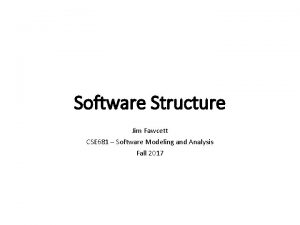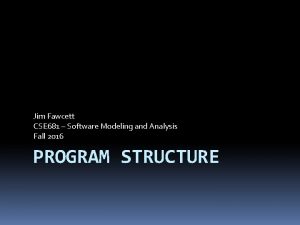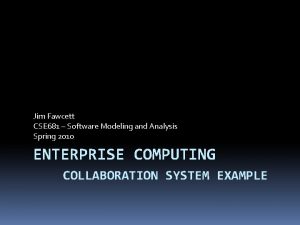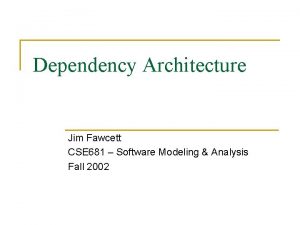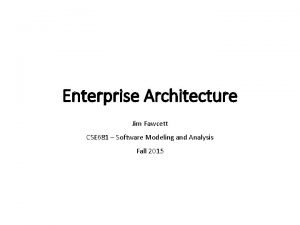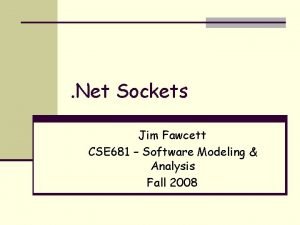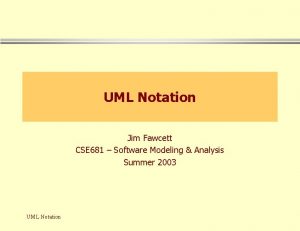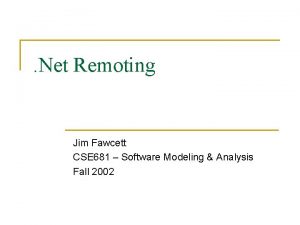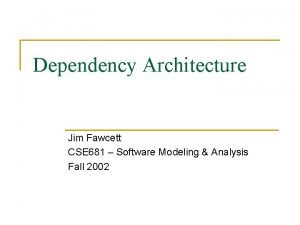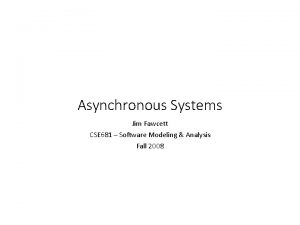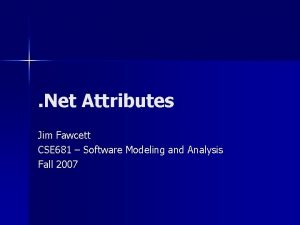Interception Jim Fawcett CSE 681 Software Modeling and












- Slides: 12

Interception Jim Fawcett CSE 681 – Software Modeling and Analysis Fall 2007

References n n Essential. Net, Volume 1, The Common Lanaguage Runtime, Don Box with Chris Sells, Addison-Wesley, 2003 Aspect-Oriented Programming, Shukla, Fell, Sells, MSDN, March 2002 Advanced. Net Remoting, Ingo Rammer, Apress, 2002 Microsoft. Net Remoting, Scott Mc. Lean, James Naftel, Kim Williams, Microsoft Press, 2003

What is Interception? n Interception is the process of inserting processing: – after a client call, but before the method executes – after method execution, but before thread of exectution returns to the client n This processing, in. Net, is usually specified by an attribute: – [Serializable] – [One. Way] n One use of interception is to attempt to separate solution domain processing from problem domain processing.

Invoking a Method Interception happens here also

Invocation Message Model n The CLR makes method callstack transformation accessible via the IMessage interface. n IMethod. Message provides access to method arguments, return value, and to the metadata for the method via a Method. Base property. n This provides access to stack frame contents without requiring knowledge of the stack layout.

Creation of Messages n A transparent proxy, created by the CLR, is used to translate method calls into messages. n The transparent proxy is always associated with a real proxy, responsible for transforming a Method. Call. Message into a Method. Return. Message. The transparent proxy then uses the Method. Return. Message to transform the call stack into the result stack configuration.

Stack to Message to Stack Converts message to stack Converts stack to message

Context. Bound Objects n Deriving a class from System. Context. Bound. Object ensures that every access to an object is through a transparent proxy. n A context represents services required by the bound object. n The whole purpose of interception is to automatically provide pre and post processing of method calls. n This is done with Message. Sinks. n The context specifies what Message. Sink process will be applied to a context bound object.

Message Sinks n Message. Sinks provide processing applied to Method. Call and Method. Return messages. n This is an extensible process. Any number of Message. Sinks can be inserted in connection between a client and target object.

Installing Message Sinks n n The CLR gives context attribute objects the chance to install context properties as the context is being created. It also gives context property objects the opportunity to put Message. Sinks between a proxy and Context. Bound object when the proxy is created.

Afterword n These notes summarize material provided in Chapter 7 of Don Box’s “Essential. Net”, Volume 1. – In that chapter the author provides a small example that shows code fragments illustrating how to build the interception apparatus. n Ingo Rammer in his “Advanced. Net Remoting”, provides examples of how channels work and how to build custom Message Sinks, in chapters 7, 8, and 9. n Scott Mc. Lean, et. al. , in “. Net Remoting”, also provide examples of how to build interception in chapters 5, 6, and 7.

End of Presentation













